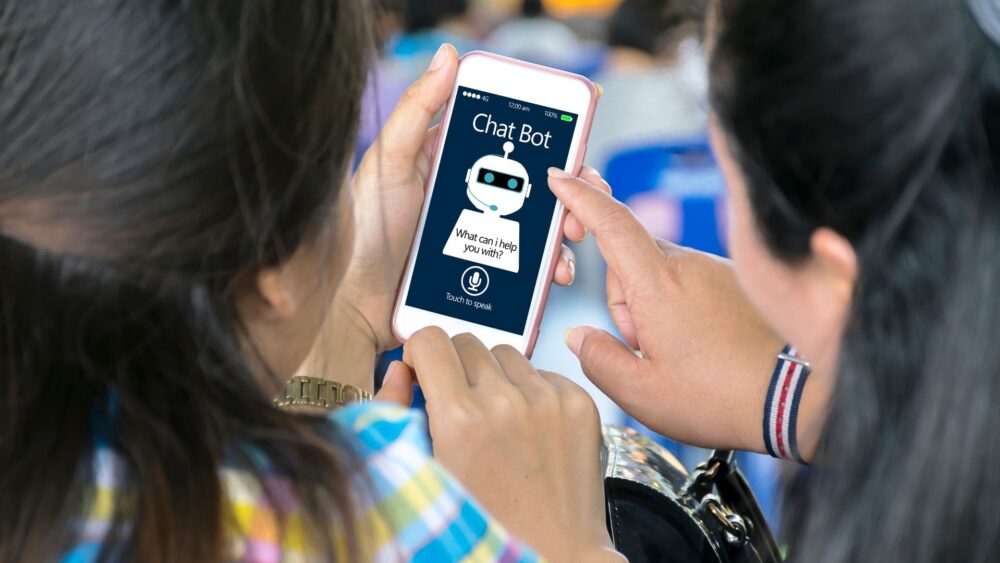AI influences our decisions and beliefs—and we even don’t notice—by taking advantage of our innate responses to novelty, interactivity, and social validation.
My approach to new technology has always been, “It’s not about the tools; it’s about what people are trying to do with the tools.” (Ask my students.) However, with AI, I began to wonder if it might actually be all about the tools after all. Whether TikTok survives in its current incarnation, its innovative use of AI algorithms has fueled a profound cultural shift; they have changed how people engage with popular culture, further disrupted the path to celebrity, and reshaped how brands connect with consumers. But mostly, AI is the first tool we don’t always know we’re using. It’s not like electricity, which we take for granted, but it is pretty obvious when we hit the switch. AI has, and will continue to, influence our expectations, preferences, and goals because it allows people to control and frame the information we use to construct our reality. And how will we know?
You had to see the pitch for digital literacy coming. Never has it been more important to understand how AI is used behind the scenes, not to correct our grammar or suggest term paper topics. The real issue is to become smart enough to engage with AI intentionally rather than unconsciously being influenced by its unseen forces.
Thanks for reading.
Key Points
- AI-driven personalization subtly shapes what we see, believe, and buy.
- AI amplifies sensational social media content that spreads misinformation and fuels echo chambers.
- Dynamic pricing and FOMO tactics increase credibility and drive purchase intentions.
- AI literacy means learning the skills to identify AI’s persuasive tactics and make intentional and informed choices
We are in the middle of a digital transformation. Despite the headlines, the biggest issues are not TikTok’s survival, screen time, or cell phone bans. These are just symptoms of a deeper cultural shift—one driven by the growing influence of artificial intelligence (AI). AI is a game-changer because, unlike previous technologies, we can’t always see where it is or what it’s doing. AI literacy—a central part of digital literacy–is essential. We must be informed, critical, and capable of making decisions in a world increasingly shaped by AI.
AI: Now You See It, Now You Don’t
AI is the elephant in the room, often invisible but profoundly influential. It’s embedded in our daily lives—from social media algorithms and online shopping recommendations to virtual assistants like Siri or Alexa. Nearly 70% of U.S. teenagers actively use AI tools like Snap’s MyAI and ChatGPT (Hart Research, 2023). And why wouldn’t they? AI-powered tools provide help with writing, research, brainstorming, and organization–and so much more.
Companies like Tesla use AI-driven robots in assembly lines to improve speed and precision, reducing production costs. IBM’s Watson is one of the AI-powered diagnostic tools that assist doctors in identifying diseases or analyzing medical imaging. A study by Rand found that 18% of teachers polled used AI to help generate classroom assignments or worksheets, lesson plans, supplement their own instructional materials, and adapt instructional content to fit the level of their students (Diliberti et al., 2024). Personalization helps you weed through all the choices on Netflix to find content you want to see. The AI-enabled Starbucks’ app sends you rewards tailored to what you like to order.
AI has also revolutionized creative industries, generating digital art, animations, music, and even book content. In the 2023 film, The Frost, the filmmakers used prompts to generate stunning and surreal landscapes that would have been costly or impossible with traditional methods (Heaven, 2023).
AI can do extraordinary things to increase efficiency and accessibility, but its impact is far stealthier. While AI is obvious in tools like ChatGPT, it is not in news feeds, product recommendations, and search engines. Unseen algorithms respond to user behavior, creating hyper-personalized experiences that identify user preferences within seconds, deliver content with unprecedented precision, and provide interactive experiences that take advantage of the human needs for newness, agency and social validation. In doing so, they can influence decisions, beliefs, and behaviors with the user none-the-wiser.
How AI Influences Social Behaviors
AI is more than just another tech tool. AI’s ability to work behind the scenes and mimic human thought processes can blur ethical lines, especially when it comes to tasks like schoolwork or content ownership. As AI becomes more integrated, concerns about misinformation, manipulation, and loss of personal agency will grow. AI is reshaping how we interact, make decisions, and even think about core issues like trust.
1. Redefining Social Interactions
Social media algorithms, powered by AI, prioritize content based on engagement. Each platform has its own formula—watch time on TikTok and YouTube, meaningful interactions on Facebook, and interest-based ranking on Instagram. These AI-driven feeds influence trends, beliefs, and behaviors in subtle but powerful ways:
- Reinforcing confirmation bias: AI continuously feeds users content that aligns with their existing beliefs, creating echo chambers.
- Amplifying emotional content: Sensational or emotionally charged posts receive more engagement, encouraging platforms to push them to more users.
- Prioritizing virality over accuracy: AI often favors extreme or misleading content if it maximizes clicks, shares, and user interaction.
2. AI Shapes Consumer Decisions
AI doesn’t need traditional persuasion tactics to shape buying behavior—it does it through data-driven personalization.
- Curating recommendations: AI suggests products and entertainment based on past interactions, subtly guiding choices.
- Using dynamic pricing: AI adjusts prices based on demand and browsing history, leveraging limited-time offers that exploit our FOMO (fear of missing out) to steer consumer decisions in real-time.
- Employing subtle “nudges”: Design elements like notifications influence choices and encourage purchases.
3. AI Changes How We Form Opinions
AI mediates information flow, activating social cues around trust and decision-making that change how we form beliefs and evaluate credibility.
- Activating social proof: “Trending now” and “Liked by your friends” signals make certain content appear more popular, trustworthy and relevant.
- Amplifying misinformation: AI prioritizes content that gets high engagement, which can increase the spread and perceived legitimacy of misleading information.
- Influencing beliefs subconsciously: AI shapes reality by filtering what gets repeated, creating echo chambers. The more we see an idea repeated, the more we’re likely to accept it as true.
If AI’s so Powerful, What Can We Do?
To navigate AI’s persuasive power, we need to be proactive rather than passive consumers of technology.
- Build awareness: Understand how algorithms shape decision-making and recognize when persuasion is at play.
- Develop digital literacy: Teach critical thinking about AI’s role in shaping content and engagement, especially to children and young adults.
- Push for transparency: Advocate for platforms to disclose how their algorithms prioritize and filter information.
AI shapes how we interact, shop, and think—sometimes in ways we don’t notice. By understanding its role and impact, we can engage with AI intentionally rather than being unconsciously influenced by its unseen forces.
If you want to see an amazing example of AI, check out this NotebookLM-generated audio interview made from the article:
References
Diliberti, M. K., Schwartz, H. L., Doan, S., Shapiro, A., Rainey, L. R., & Lake, R. J. (2024). Using artificial intelligence tools in k–12 classrooms.
Hart Research. (2023). Kids and the future of artificial intelligence. National 4-H Council.
Heaven, W. D. (2023). Welcome to the new surreal: How AI-generated video is changing film. MIT Technology Review.

 Dr. Pamela Rutledge is available to reporters for comments on the psychological and social impact of media and technology on individuals, society, organizations and brands.
Dr. Pamela Rutledge is available to reporters for comments on the psychological and social impact of media and technology on individuals, society, organizations and brands.